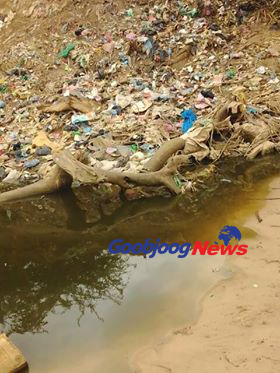PART II: Drying up of Shabelle river-a question of local responsibility

By Yusuf Osman

SHABELLE RIVER, one of the two rivers alongside Jubba River which form the bedrock of livelihood for millions in Somalia has for the third time in a row dried up.
In our first installment on the drying up of the river which originates from the mountain ranges of eastern Ethiopia, we explored the breath and length of the river which has since been reduced into dry valleys and the impact on locals who depend on it for irrigation, livestock and domestic use.
From Beletweyne, down to Jowhar and Afgooye, residents are now facing an acute water crisis and disease outbreak-mainly diarrhea as they scavenge for the remaining but heavily polluted water. Others have resorted to ploughing the river beds for the much water they can get.
Ethiopia and the massive hydro-electricity and irrigation dams! That seems to be the universal response as to the reasons for the drying up of the river. Somalia is currently facing a drought which at its apex last year almost degenerated into a famine but thanks to local and global response the situation was nipped in the bud. But the UN this week warned Somalia is not off the woods yet.

UN Humanitarian Coordinator for Somalia Peter de Clercq said there was ‘strong possibility that famine-type conditions would develop’. Rains have failed for seasons in a row within the recent past leading to not only water shortage for domestic and livestock consumption but also cutting off prospects of any decent crop harvest.
The 2,526 Km long river originates from eastern Ethiopia Highlands, joins Somalia in Beletweyne and flows southwards to join with Jubba River in southern regions of the country before it subsequently drains into the Indian Ocean.
Goobjoog News correspondents went back this past week to explore another angle of the story-effects of human activity. They sought to understand our human activity within the riparian communities could have contributed to the drying up of the river.

BELETWEYNE
Goobjoog News correspondent in Beletweyne visited sections of the river which as seen in the pictures below show a river heavily chocked by waste blocking any further flows.
“There is massive dumping of waste into and along the river,” our correspondent says. “From household waste to wastes from hotels, shops, the river is becoming choked.”


Pictures from Jowhar also show waste disposal on the drying river.
AFGOOYE
A similar story unfolds in Afgooye where the river has now been reduced into a dry valley. They are effectively dumpsites. Locals seems to have forgotten there was once a river here, Goobjoog News correspondent in the town says.
“Taking waste from your house and dumping into the river is like taking waste from the river and dumping into your house,” Abdullahi Hasan Abdi illustrating the metaphor of the river fighting back told Goobjoog News.
We have experienced disease outbreak because the waste let into the river pollutes the water and the same people still draw water from the river, added Abdi.
Abdi, a local administrator and vice chairperson of social affairs in Jowhar said there was wanton dumping of waste by locals into the river. “We have been telling the people of Afgooye community not to do this. We must stop this.”

Dr. Nur Omar Mayow a director of Afgooye hospital said locals are at risks of catching waterborne diseases given the method of waste disposal. “It has become normal for those particularly operating restaurants to dump their trash into the river,” Dr Mayow stated. “Diarrhea which is a dangerous disease can result into death. People should be responsible stop dumping waste into the river.”
Several people who spoke to Goobjoog News said there was almost no concern for the river by the locals. “Sewers are now flowing into the river and no one seems to care.”
In our next segment, we will explore the emerging conflict between large scale farmers and locals over use of River Shabelle waters.
GOOBJOOG NEWS